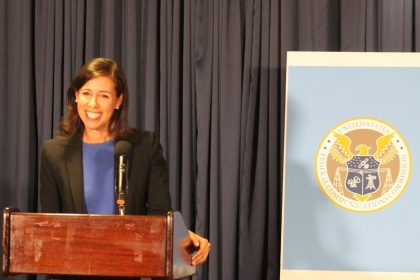AI Seen as Key to Planning Climate Change-Related Hazard Mitigation

PASADENA, Calif. — As demand for more detailed assessment of climate risks grows, a team of scientists from around the globe argue for utilizing artificial intelligence to greatly improve the climate simulations that form the basis of hazard mitigation plans.
Although we’re all prone to complain about the occasional hits and misses, forecasters have become pretty good at predicting the weather. Today, for instance, it’s not uncommon to get a reliable prediction of the conditions ahead as many as 10 days in advance.
Making accurate, longer term predictions about how the climate is changing, however, remains something of a challenge.
To those who equate the large-scale shifts in climate to the large, slow-moving, tectonic plates that divide the Earth’s crust and occasionally cause an earthquake, this might not seem so much of a problem.
But changes in climate don’t occur at a snail’s pace, and the ability to better nail down the where, why and how of climate change on a local or regional level could help guide everything from decisions about insurance coverage in fire- or flood-prone areas to how the structures we live and work in are designed.
The problem, as described in a paper recently published in the journal Nature Climate Change, is that our ability to model climate change is hampered by the enormous amount of computing power required to simulate all facets of climate.
And even if we had enough power, write Caltech’s Tapio Schneider and the 13 colleagues who participated in the research, our current computational abilities would only take us so far — we’d still fall short in capturing the small-scale processes necessary for accurate modeling.
As Schneider explained in an interview on the Caltech website, while big things are relatively easy to model — things like temperature, winds and ocean currents — other features of the climate, like low-lying marine clouds, are not.
In their paper, he and his fellow researchers suggest that if weather scientists used machine learning to fill in these gaps, they’d be able to create more robust models without the need of massive computing centers.
“Weather forecasts have become quite good over the last few decades. It’s a bit of an unsung success story of science,” Schneider told Calech’s Emily Velasco. “The primary reason they’ve become quite good is that they use data much more extensively than they used to. In some ways, we want to achieve the same thing for climate prediction. I think that can be achieved by using AI tools to harness the extensive data about Earth we already have.”
The researchers’ climate forecasting proposal relies on two sets of tools.
The first is used for a course sketch, if you will, of actual physical processes, like the behavior in individual clouds.
Because they are simplified versions of actual events, they have to be “tuned” to behave like their real-life counterparts.
To go further, and save on the computing time and power, the researchers assert that artificial intelligence — machine learning — can be used to quantify some of the uncertainty inherent in climate modeling and generate new data at scales that are hard to measure.
The machine learning used by the team has similarities to image generators like OpenAI’s DALL-E.
In the case of DALL-E, the machine-learning algorithm is trained on a huge set of samples to create images of objects it knows how to identify.
When it comes to climate science, the researchers say, similar algorithms can be used to generate pieces — hundreds or thousands of them — that can be plugged into bigger simulations to fill in the missing gaps.
The simulated processes would then be brought together with real-world data to create realistic predictions about Earth’s rapidly changing climate, researchers contend.
“We can use the physical laws as far as we can, given the limited computational power at our disposal,” said Schneider, who is also a senior research scientist at the Jet Propulsion Laboratory, which Caltech manages for NASA.
“What we cannot simulate, we can learn from data,” he told Velsaco.
Dan can be reached at [email protected] and @DanMcCue

























